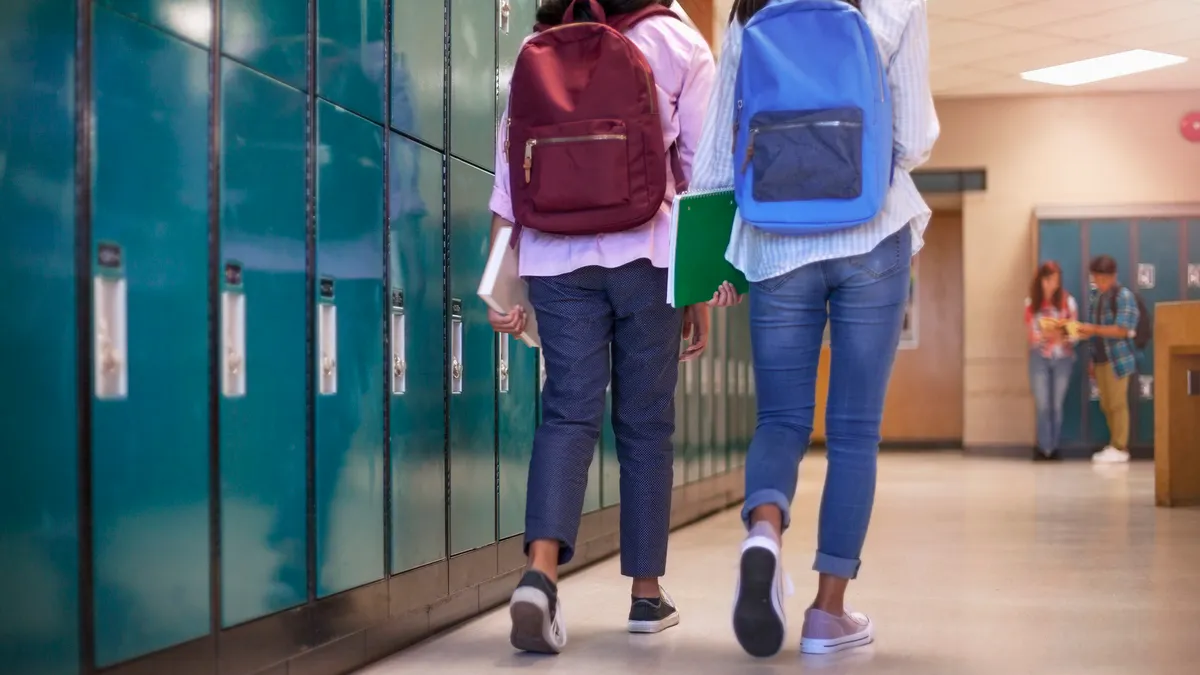Dive Brief:
- California schools saw "massive reductions" in all forms of school violence and weapons use over an 18-year period from 2001 through 2019. Alongside those declines came increases in students’ senses of "school belongingness" and safety, according to a longitudinal study published recently in the World Journal of Pediatrics.
- Researchers, using prepandemic data from the voluntary California Healthy Kids Survey, found significant drops in weapons-related behaviors, including a 70% reduction in reports of guns on school property and a 59% reduction of being threatened by a weapon on campuses.
- These trends are likely due to increased funding and heightened awareness for school safety over the past two decades, the researchers wrote, adding that "billions of dollars of investment" in the state may have changed behaviors and supported evidence-based practices to keep students safe.
Dive Insight:
Although further research is needed to better understand the reductions in what the researchers called "school victimization," the data indicates possible benefits from violence prevention strategies, they said. Those strategies could include zero tolerance policies, prevention-oriented social-emotional programs, restorative justice approaches and trauma-informed school practices.
Of note is that the trends in California stand in sharp contrast to public concern that school violence is increasing nationally amid escalating mass shootings at schools.
While each school shooting is a "devastating act that terrorizes the nation," it's important for the public and policymakers to make distinctions between school shootings and other forms of school violence, the study said.
“Mass shootings are just one part of this story," said Ron Avi Astor, co-author of the study and professor of social welfare at the University of California, Los Angeles, in a statement. "Overall, on a day-to-day basis for most students, American schools are safer than they’ve been for many decades.”
The study, for example, found the rate of students involved in physical fights dropped from 25% in 2001-03 to 11% in 2017-19. Also, Black and Latino students showed larger declines in victimization compared to White students.
In addition, the study found lower rates over that 18 year period for nonviolent victimization behaviors, such as being made fun of because of looks and the spread of mean rumors.
The violence reduction patterns were seen in more than 95% of schools around the Golden State. The study was based on 6.2 million student survey results from 7th, 9th and 11th graders attending a total of 3,252 schools. The study's other co-authors are Rami Benbenishty of Hebrew University of Jerusalem and Ilan Roziner of the Sackler School of Medicine at Tel Aviv University.
Other recent studies show a more grim picture of children's safety and educator anxiety about gun violence.
A Pew Research Center analysis, using data from the Centers for Disease Control and Prevention, found a 50% increase in gun deaths among children and teens under age 18 between 2019 and 2021. About 60% of those deaths were homicides and 32% were suicides. Boys accounted for 83% of all gun deaths among children and teens in 2021.
A Kaiser Family Foundation survey shows that 44% of parents with children live in a home with guns.Of all adults with guns in their homes, 75% said the guns are not stored in ways that reflect gun-safety practices. The survey included 1,271 adults.
Another study, conducted by Evolv Technology, an artificial intelligence weapons detection company, found increased anxiety among educators due to swatting, the practice of making a false threat to cause disruption. About 47% of educators said swatting increased their fears or worries, and 40% said it made them more apathetic.
Nearly 50% of respondents said they would feel better if schools had security guards at entrances and exits, and 22% said they would ask or allow staff and teachers to carry guns. The survey included 263 education professionals.







 Dive Awards
Dive Awards





